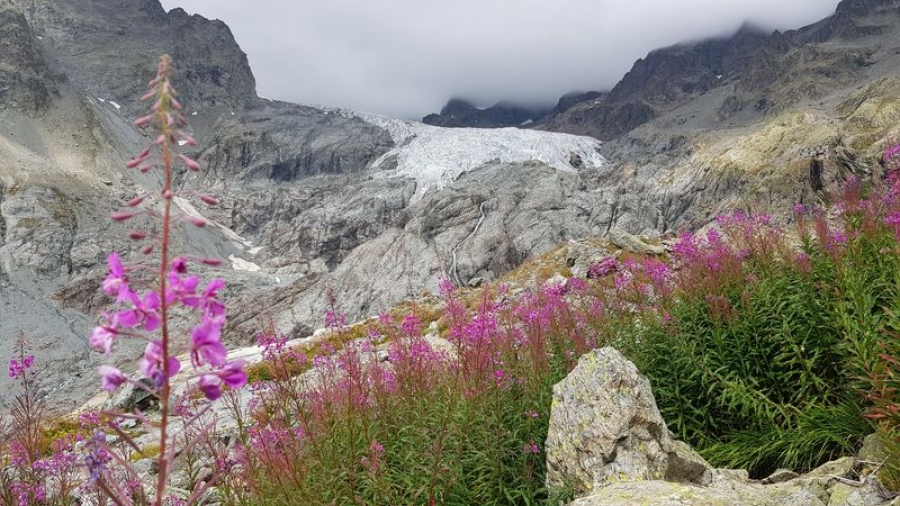On 13 January 2021 the French Ministry of the Environment organized the virtual “Mountain Biodiversity Day”. It served as a platform for discussions between experts and political representatives from mountain regions all over the world, working in the field of mountain biodiversity. The Mountain Biodiversity Day highlighted and promoted joint messages targeting the importance of mountains within the global Post-2020 Global Biodiversity Framework.
This pandemic is primarily not about bat soup, pangolins or specific viruses but all about our interactions, exploitation and destruction of nature. It is about the interfaces – these edges of destruction– between humans, wildlife and nature in general. Along with climate change, biodiversity loss and raging inequities and injustice, COVID-19 is just another symptom of an ailing planet and has starkly reminded us of the basic fact: Human, animal, plant, and environmental health and well-being are all intrinsically connected.
It is painfully apparent that addressing the complex interactions of human, animal, and environmental health requires environmentally inclusive, just and shared values that heed landscape- and society-level issues. The quality of current and future human and animal health and well-being will depend on our respectful, humble and responsible environmental stewardship.
One of the most important and proven solutions to this global crisis are protected areas. This is a practice that has been used by Indigenous Peoples and local communities for centuries, setting aside areas that have important natural, cultural, and spiritual values. In recent decades governments have created more and larger protected areas on land and sea, and there is strong evidence that effectively designed and managed protected areas are key to the conservation of biodiversity, climate mitigation and sustaining local livelihoods. However, many protected areas are not well managed; they do not represent the necessary diversity of ecosystems. And many of them are simply too small to be viable in the long term, especially in view of climate change. In a few words, protected areas must be located in the right places, be large enough and interconnected to be functional and sustain viable populations of key species and functions.
It is not sufficient to protect the highest elevations while neglecting the rampant land-use change across the valley floors. If we want our protected areas in the Alps to remain strongholds of biodiversity and long-term refugia for species, we necessarily need to protect the entire altitudinal gradients. Protection also provides numerous ecosystem services, including regulating climate and air quality, and amongst others providing water, energy food while also providing sociocultural benefits to the large urban centers adjacent to the Alpine space and beyond. Across the Alps we need to make sure that our protected areas are not only connected – ecologically and functionally but also valued appropriately across sectors and by the highly urbanized belt surrounding the Alps.
ALPARC is working together with the protected areas and its Partners (Alpine Convention, Research institutions, NGO’s and Ministries) since some 20 years on these issues of of protected areas location and especially their interconnectivity as all protected areas of the Alps are too small in size to sustainably protect biodiversity for generations to come.
A lot of work and planning has been done for the Alpine Space, methodologies and maps have been produced to better connect protected areas and as well natural spaces to make habitat protection a more efficient element of a global sustainable and environment friendly development of the alpine area. Political awareness has risen about the topic and both – the Alpine Convention and the EUSALP approach have recognized the importance of ecological connectivity linked to long term spatial planning as one of the most promising ways to protect Alpine’s biodiversity.
Stating in January 2021 that emerging zoonotic pathogens, climate change and biodiversity loss have significant implications for both public health and economic stability is perhaps the most tremendous understatement of this still-young century. Returning to zoonotic-origin spillovers: The costs of many individual recent major outbreaks such as SARS, MERS, and Ebola are estimated in the tens of billions of Euros. However, when all is tallied, the economic devastation caused by COVID-19 will certainly be orders of magnitude greater: in the tens of trillions of Euros. The ongoing and future costs of climate change and biodiversity loss appear simply unimaginable.
Investment in nature and climate protection through a better, more resilient and more species orientated approach of habitat conservation seems more than ever before crucial for mankind. The Alpine protected areas and ALPARC constitute the largest network of nature-based solutions for climate change and biodiversity protection within the perimeter of the Alpine Convention.
We need to stop, discounting nature right now. And irrevocably accept that nature is not and can never be considered a cheap externality to our unrestrained production and consumption patterns. Moving forwards, these externalities with which we have burdened our environment must be fully accounted for. Nature can no longer be considered cheap.
As the pandemic continues to rage across the planet, we must urgently recognize and value the foundational importance of intact and resilient environments for our health and wellbeing. Basically, we need biodiversity conservation, climate change mitigation and health in and across all policies and administrations. Existing siloed approaches are unacceptable and must become a thing of the past.
Prof. Dr. Chris Walzer
Research Institute of Wildlife Ecology; University of Veterinary Medecine Vienna / Executive Director of Health at the Wildlife Conservation Society, New York / USA
Dr. Guido Plassmann
Director ALPARC


